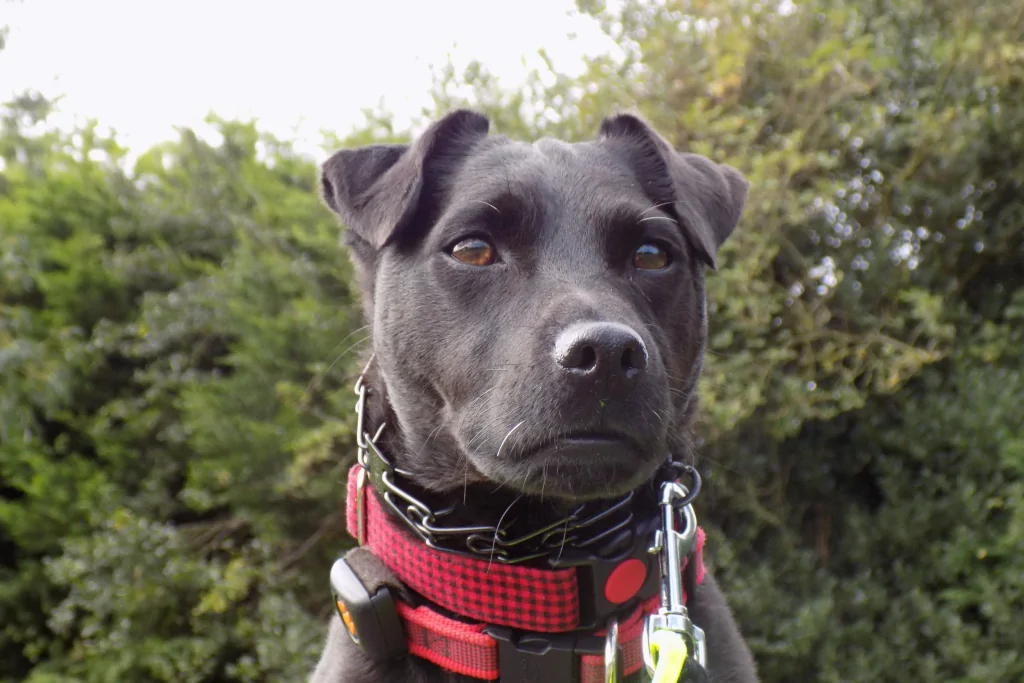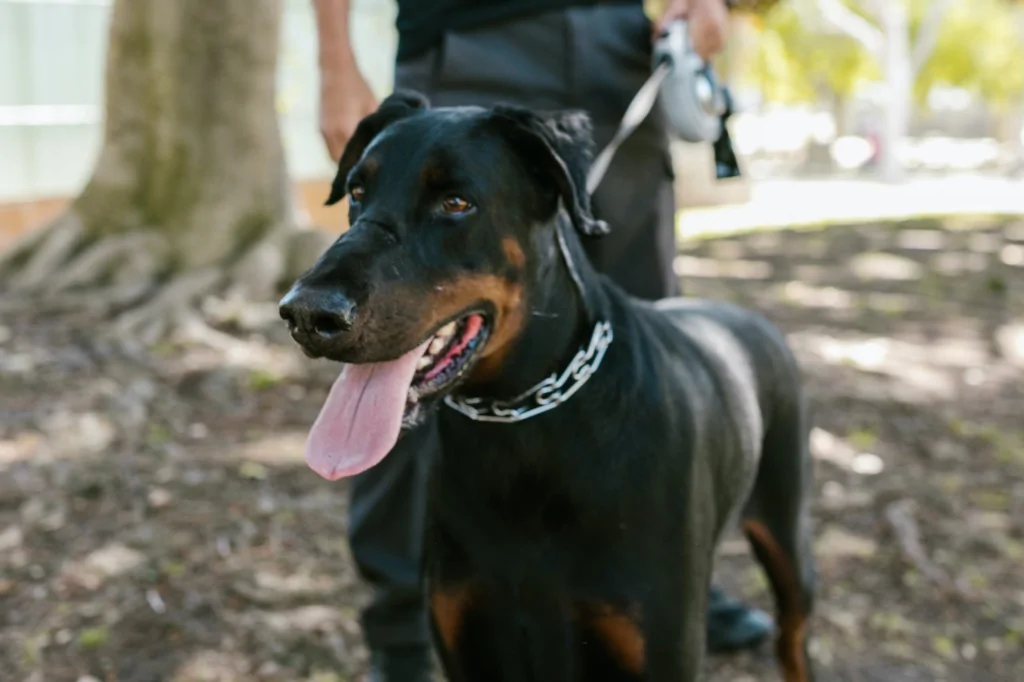Disclosure: We may earn a commission from helpful, relevant links in our content. No cost to you. See our privacy policy.
Walking your dog should be a pleasure, not a battle of wills. If your dog continues to pull despite using a prong collar, it can be both frustrating and exhausting. Why does this happen?
But don’t worry, we’re here to help you understand why this might be happening and offer practical solutions for a more enjoyable walking experience with your four-legged friend.

Why Does My Dog Still Pull While Wearing a Prong Collar?
There are several reasons your dog may still be pulling while wearing a prong collar.
First, it’s possible that the collar is not fitted or used correctly, which can reduce its effectiveness.
Second, your dog might have deeply ingrained habits or behavioral issues that require additional training to resolve.
In some cases, the prong collar might not be the best tool for your dog’s specific needs, and exploring alternative training methods or tools could be beneficial.
By identifying the root cause of the pulling, you’ll be better equipped to address the issue and make walks more enjoyable for both you and your dog.
Proper Use and Fitting of a Prong Collar
Understanding the correct way to use and fit a prong collar is essential for your dog’s comfort and safety. Let’s explore the key aspects of proper prong collar usage and fitting techniques.
Choosing the Right Size and Material
Selecting the correct size and material for your dog’s prong collar is crucial for effectiveness and safety. Measure your dog’s neck circumference and follow the manufacturer’s sizing guidelines to find the right fit.
Opt for stainless steel or chrome-plated collars, as they’re durable and less likely to cause skin irritation. Alternatively, you can opt for materials like chrome-plated steel or brass, depending on the needs of the dog owner.
Don’t forget to refer to our previous blog post, “Ultimate Dog Training Collar Guide,” for more detailed information on suggested collars.
Adjusting the Prong Collar for a Snug Fit
A properly fitted prong collar should sit high on your dog’s neck, just below the ears. It should be snug but not too tight, allowing you to fit one or two fingers between the collar and your dog’s neck comfortably. If necessary, add or remove prong links to achieve the optimal fit.
Correctly Attaching the Leash
Attach the leash to the designated ring on the prong collar. Ensure that the collar’s chain is not twisted, as this can reduce its effectiveness and cause discomfort for your dog. If you want to choose the best leash possible, check our guide on choosing a training leash.
Introducing the Prong Collar Gradually
Introduce the prong collar to your dog gradually to ensure a positive experience. Start by letting your dog sniff and explore the collar before placing it on their neck. Offer treats and praise to create a positive association with the collar.
My story:
Anyway, within a few days, Sam was comfortable wearing the collar, and we were ready to start our loose-leash walking training. We only used it for about a week, though, and moved on to a front-clip harness.

Monitoring for Signs of Discomfort or Injury
Always keep an eye on your dog while using a prong collar. If your dog shows signs of discomfort, injury, or difficulty breathing, immediately stop using the collar and consult a professional for guidance.
Alternative Training Methods for Teaching Loose-Leash Walking
Positive Reinforcement Training
Positive reinforcement training is a highly effective way to teach your dog loose-leash walking. Reward your dog with treats, praise, or playtime when they walk by your side without pulling.
Gradually increase the distance and distractions during training sessions to build your dog’s skills and confidence. Start your positive reinforcement journey here.
Front-Clip Harnesses
A front-clip harness is an excellent alternative to prong collars for dogs that pull. The leash attachment at the chest helps redirect your dog’s forward movement without causing discomfort or harm.
One popular front-clip harness to consider is the Easy Walk Harness, which is specifically designed to reduce pulling and offer better control during walks.

Another great option is the Freedom No-Pull Harness, known for its effectiveness in managing dogs that tend to pull on the leash.
Practice loose-leash walking with a front-clip harness, rewarding your dog for maintaining a slack leash.
The “Be a Tree” Method
The “Be a Tree” method is a simple yet effective technique to discourage pulling. When your dog pulls, stop walking, and stand still like a tree. Wait until your dog releases the tension on the leash before continuing your walk. This teaches your dog that pulling won’t get them anywhere faster.
This is similar to the “Stop and Go” technique, mentioned in one of our previous articles on dogs who are strong pullers.
Changing Direction
Another useful technique for teaching loose-leash walking is changing direction. Whenever your dog starts to pull, change direction abruptly and reward them for following you. This helps your dog understand that they should pay attention to you and walk calmly by your side.
Enrolling in a Training Class
Consider enrolling your dog in a group training class or working with a professional dog trainer. They can provide personalized guidance and support tailored to your dog’s needs, ensuring that you both have a successful and positive loose-leash walking experience.
These alternative training methods offer various options for teaching your dog loose-leash walking without relying on a prong collar. Experiment with different techniques to find the one that works best for you and your furry friend.
Suggested read: Training aids for leash pulling
Seeking Professional Help for Persistent Pulling
If your dog continues to pull despite trying various techniques and training methods, it may be time to seek professional help.
A certified dog trainer or behaviorist can identify the underlying causes of your dog’s pulling and develop a tailored training plan to address the issue.
I remember working with a behaviorist for my dog, Sam, who was a strong puller. The behaviorist quickly noticed that Max was anxious around other dogs, which contributed to his pulling. She then provided specific strategies to help him feel more comfortable and walk calmly on the leash.
I mentioned some of those strategies in this blog post you’re reading. Try and use some of them, and you may be surprised how successful they can be.
Ensuring a Positive Walking Experience for Both You and Your Dog
Creating a positive walking experience for both you and your dog involves patience, consistency, and understanding your dog’s needs.
Pay attention to your dog’s body language, take breaks when necessary, and reward good behavior.
For example, if you’re walking your dog and encounter a loud construction site, you may notice your dog getting anxious. Taking a detour to a quieter area may help your dog relax. Try to be flexible and prioritize your dog’s well-being during walks, and you’ll see great results.
Ever wondered why police dogs use prong collars? It’s not a thoughtless decision. And if you want to learn more about how to train your dog properly, visit our page on dog training, and you’ll find a lot of great guides in there.
FAQs
Is it normal for a dog to pull even when wearing a prong collar?
It can be normal for a dog to pull while wearing a prong collar, especially if it is not properly fitted or the dog has not been adequately trained to walk on a loose leash. For a more general aproach for beginners, check our guide on loose leash training to resolve this.
Are there any risks associated with using a prong collar incorrectly?
Using a prong collar incorrectly can cause injury, discomfort, or fear in your dog, potentially leading to behavioral issues or a negative association with walking.
What is the best way to introduce a prong collar to my dog?
To introduce a prong collar to your dog, start by allowing them to sniff and inspect the collar, then slowly and gently place it on their neck, ensuring a proper fit. Gradually acclimate your dog to the collar during short training sessions before using it on walks.
Can I use a prong collar on a puppy?
It is generally not recommended to use a prong collar on a puppy, as their necks are more delicate, and there is a higher risk of injury. Opt for gentler training methods and tools, such as positive reinforcement and a front-clip harness.
Alex, a passionate animal lover, has experience in training and understanding animal behavior. As a proud pet parent to two dogs and three cats, he founded AnimalReport.net to share insights from animal experts and expand his knowledge of the animal kingdom.




